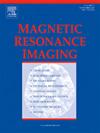Multiparametric radiomic analysis of MRI for predicting satellite nodules and recurrence-free survival in patients with hepatocellular carcinoma
IF 2
4区 医学
Q2 RADIOLOGY, NUCLEAR MEDICINE & MEDICAL IMAGING
引用次数: 0
Abstract
Background
To establish and vertify a nomogram model that integrates multiparametric magnetic resonance imaging (MRI) radiomic signatures and clinical features to predict satellite nodules (SNs) and recurrence-free survival (RFS) in hepatocellular carcinoma (HCC) patients.
Methods
Data from 244 patients with HCC who underwent multiparametric MRI were analyzed and randomly assigned into a training (n = 170) dataset and a validation dataset (n = 74). A support vector machine algorithm was employed to develop T1WI (T1-weighted imaging), T2WI (T2-weighted imaging), arterial phase (AP), portal-venous phase (PVP), and integrated MRI radiomic models. The selected signatures were combined with independent clinical factors to construct a nomogram model. The performance of these predictive models in the prediction of SNs and RFS was assessed with the AUC and Kaplan–Meier analysis, respectively.
Results
Portal vein tumor thrombosis and peritumoral enhancement were significant clinical indicators of SNs (P < 0.05). In predicting SNs, the nomogram model demonstrated the highest AUC value of 0.94 in the training dataset and 0.83 in the validation dataset. This was followed by the integrated MRI (0.93 and 0.79), AP (0.92 and 0.82), T2WI (0.91 and 0.78), PVP (0.90 and 0.80), and T1WI models (0.88 and 0.77). Compared with SNs (−) patients, SNs (+) patients had a significantly lower median RFS (61.3 vs. 18.6 months, P < 0.001). Additionally, nomogram predicted SNs (+) had a lower median RFS compared to SNs (−) (20.5 vs. 63.1 months, P < 0.001).
Conclusion
The nomogram model based on multiparametric MRI radiomics signatures demonstrated substantial efficacy in predicting SNs and RFS in patients with HCC.
预测肝细胞癌患者卫星结节和无复发生存期的MRI多参数放射学分析
背景:建立并验证一种结合多参数磁共振成像(MRI)放射特征和临床特征的nomogram模型,以预测肝细胞癌(HCC)患者的卫星结节(SNs)和无复发生存期(RFS)。方法对244例接受多参数MRI检查的HCC患者的数据进行分析,并随机分为训练数据集(n = 170)和验证数据集(n = 74)。采用支持向量机算法建立T1WI (t1加权成像)、T2WI (t2加权成像)、动脉期(AP)、门静脉期(PVP)和综合MRI放射学模型。选择的特征与独立的临床因素相结合,构建nomogram模型。分别用AUC和Kaplan-Meier分析评估这些预测模型在预测SNs和RFS方面的性能。结果肿瘤门静脉血栓形成及瘤周增强是SNs的重要临床指标(P <;0.05)。在预测SNs时,nomogram模型在训练数据集中的AUC值最高,为0.94,在验证数据集中的AUC值最高,为0.83。其次是综合MRI(0.93和0.79)、AP(0.92和0.82)、T2WI(0.91和0.78)、PVP(0.90和0.80)和T1WI(0.88和0.77)。与SNs(−)患者相比,SNs(+)患者的中位RFS显著降低(61.3 vs 18.6个月,P <;0.001)。此外,nomogram预测SNs(+)的中位RFS较SNs(-)低(20.5 vs. 63.1个月,P <;0.001)。结论基于多参数MRI放射组学特征的nomogram模型在预测HCC患者的SNs和RFS方面具有显著的有效性。
本文章由计算机程序翻译,如有差异,请以英文原文为准。
求助全文
约1分钟内获得全文
求助全文
来源期刊

Magnetic resonance imaging
医学-核医学
CiteScore
4.70
自引率
4.00%
发文量
194
审稿时长
83 days
期刊介绍:
Magnetic Resonance Imaging (MRI) is the first international multidisciplinary journal encompassing physical, life, and clinical science investigations as they relate to the development and use of magnetic resonance imaging. MRI is dedicated to both basic research, technological innovation and applications, providing a single forum for communication among radiologists, physicists, chemists, biochemists, biologists, engineers, internists, pathologists, physiologists, computer scientists, and mathematicians.
 求助内容:
求助内容: 应助结果提醒方式:
应助结果提醒方式:


